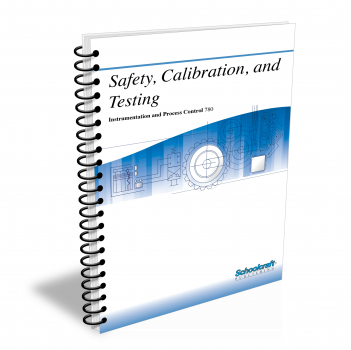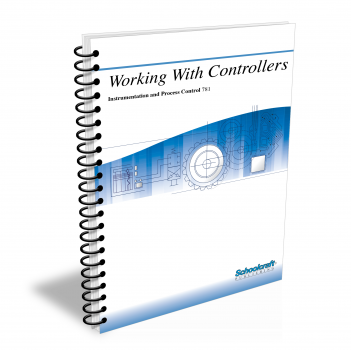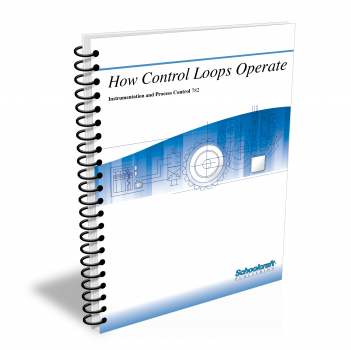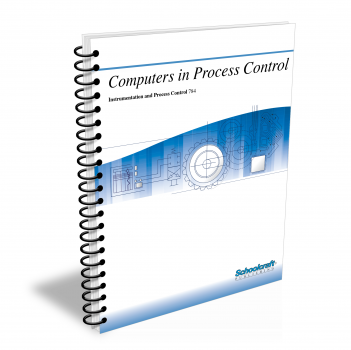Data Transmission
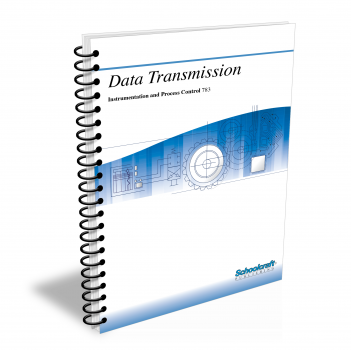
Course Number: 783
The Data Transmission textbook briefly describes mechanical, hydraulic, pneumatic, and telemetric data transmission methods. It discusses indicators and other devices and methods used for electrical/electronic data transmission in detail. It compares methods and standards for parallel and serial digital data transmission. It describes optical isolation and the operation of optical data transmission systems in detail. Finally, it provides specific methods for preventing common kinds of data transmission interference.
Does your curriculum require additional topics not included in this textbook? Build a customized version of the Data Transmission textbook below.
Recommended Contact Hours – 8
Preview a Chapter
Available Supporting Material
- Table of Contents
- Exam Copies
- Suggested Titles
Table of Contents
Chapter 1: Process Data Transmission Methods
Topics: Data handling; Local and remote indicators; Mechanical, hydraulic, pneumatic, electronic, optical, and telemetric data transmission
Learning Objectives:
- Describe the differences between data transmission in open- and closed-loop systems and with local and remote indicators.
- Discuss the differences among analog, digital, and discrete control.
- Discuss the use of intrinsically safe and explosion-proof equipment.
- List the advantages and disadvantages of mechanical, hydraulic, and pneumatic data transmission.
- Compare voltage-loop and current-loop transmission for analog data and explain the importance of resolution for digital data transmission.
- List the advantages and disadvantages of optical and telemetric data transmission.
Chapter 2: Electrical Data Transmission
Topics: Analog and digital data; Electronic PV indicators; Signal conditioning and conversion; Compensation; Span and zero adjustment; Linearization
Learning Objectives:
- Compare analog and digital data representation.
- Discuss uses for bar graph displays, CRT displays, recorders, and data loggers.
- Describe the characteristics of the electrical output signals from analog sensors and transducers, using a strain gauge as an example.
- Discuss the significance of the common-mode rejection ratio in signal conditioning.
- Describe the processes of signal conversion, compensation, zero and span adjustment, linearization, and conversion to engineering units.
Chapter 3: Digital Data Transmission
Topics: Number systems; Data formats; ASCII; Error correction; Analog-to-digital conversion; Distributed process control; Parallel and serial data transmission
Learning Objectives:
- Discuss the differences between analog and digital data forms.
- Discuss several reasons for using digital data.
- Describe methods used to interface process control data signals to a communications network.
- Explain how analog data are converted to digital form for transmission and display.
- Discuss the differences between parallel and serial data transmission systems.
Chapter 4: Optical Data Transmission
Topics: Fiber optic cable, connection, and transmission advantages; Optical propagation; Installation of cables; Light sources; Detectors; Standards
Learning Objectives:
- Name the basic elements in a data transmission system based on light energy.
- Explain how optoisolators work and why they are used.
- Describe the advantages and disadvantages of optical data transmission.
- Explain how light rays are propagated down glass fibers.
- Discuss connection and installation methods for fiber optic cables.
- Discuss the selection of light sources and detectors.
Chapter 5: Data Transmission Interference
Topics: Electrical and process noise; Signal-to-noise ratio; Power line noise; Electromagnetic interference; Capacitive coupling; Ground loops; Noise reduction techniques; Electrostatic shielding
Learning Objectives:
- Define electrical noise, process noise, and the signal-to-noise ratio.
- Explain how ac power lines, EMI, capacitive coupling, and ground loops cause electrical noise.
- Describe two kinds of noise filters and explain three methods of reducing ac power line noise.
- Compare methods for reducing electromagnetic and electrostatic coupling.
- Discuss the use of differential measurements and the CMRR.
- Describe ways of reducing ground loop noise and RFI and explain when optical coupling might be used.
Request Exam Copies
Exam Copies
Ready to see a copy of our textbooks? After selecting which textbooks you’d like to review for your course, you can submit your request by either logging in or creating an account so we know where to ship your exam copies. A representative from Schoolcraft will contact you to confirm and finish processing your request.
Exam copies are always free and yours to keep.
Selected Exam Copies
none selected
* Maximum of five copies can be ordered
